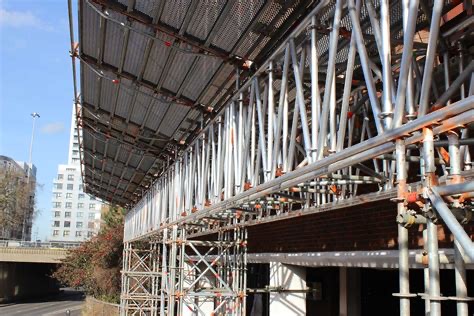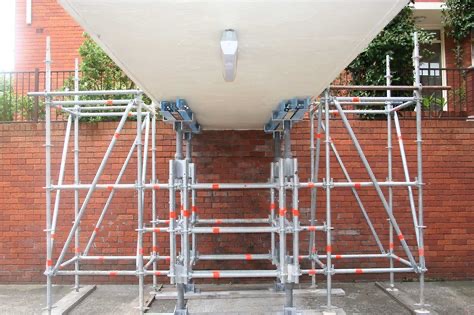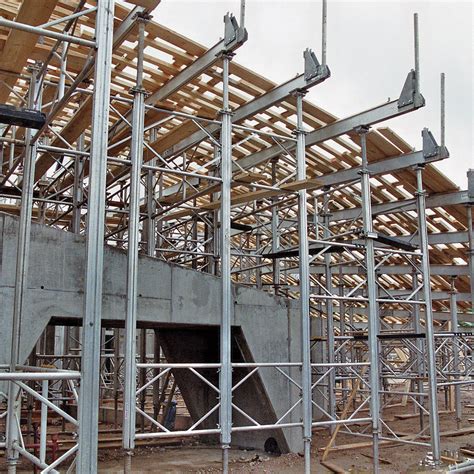Content Menu
● Key Safety Features of Heavy-Duty Aluminum Scaffolding
>> 1. High-Strength Alloys
>> 2. Corrosion Resistance
>> 3. Modular Design
● Load Capacity and Structural Integrity
>> Industrial Load Classifications
>> Safety Factors
● Compliance with Industrial Safety Standards
>> OSHA and ANSI Requirements
>> EN 12811 and AS/NZS 1576
● Case Study: Refinery Maintenance with Heavy-Duty Aluminum Scaffolding
● Maintenance and Longevity
>> Routine Checks
>> Storage Best Practices
● Heavy-Duty Aluminum vs. Steel Scaffolding
● Innovations Enhancing Safety
>> Smart Scaffolding Systems
>> Anti-Slip Technologies
● Industrial Applications of Heavy-Duty Aluminum Scaffolding
>> 1. Shipbuilding and Repair
>> 2. Power Plants
>> 3. Aerospace Facilities
● Engineering Principles Behind Aluminum Scaffolding Strength
>> Tensile Strength and Alloy Composition
>> Dynamic vs. Static Load Management
● Training Requirements for Workers
>> OSHA-Compliant Certification
● Environmental and Sustainability Benefits
>> Recyclability
>> Eco-Friendly Manufacturing
● Cost-Benefit Analysis Over 10 Years
● Conclusion
● FAQ
>> 1. What is the maximum height for heavy-duty aluminum scaffolding?
>> 2. Can heavy-duty aluminum scaffolding handle welding sparks?
>> 3. How does wind affect aluminum scaffolding stability?
>> 4. Is galvanized steel compatible with aluminum scaffolding?
>> 5. Where can I rent certified heavy-duty aluminum scaffolding?
Heavy-duty aluminum scaffolding has become a staple in industrial settings due to its lightweight design, corrosion resistance, and adaptability. However, safety remains a paramount concern for engineers, project managers, and workers. This comprehensive guide examines the safety, structural integrity, and best practices for heavy-duty aluminum scaffolding in industrial applications, supported by technical data, visual aids, and real-world case studies.

Key Safety Features of Heavy-Duty Aluminum Scaffolding
1. High-Strength Alloys
Industrial-grade aluminum scaffolding uses alloys like 6061-T6 or 6082-T6, which offer a tensile strength of 310–340 MPa. These materials balance lightweight properties with the durability needed for heavy loads and harsh environments.
2. Corrosion Resistance
Aluminum naturally forms an oxide layer, making it resistant to rust and chemical exposure. For extreme conditions (e.g., coastal or chemical plants), anodized or powder-coated finishes add extra protection.
3. Modular Design
Precision-engineered joints and locking mechanisms ensure stability. Systems like cuplock or ringlock allow rapid assembly while maintaining OSHA-compliant load capacities.
Load Capacity and Structural Integrity
Industrial Load Classifications
| Load Class | Capacity (kg/m²) | Common Applications |
| Light-Duty | 225 | Painting, electrical work |
| Medium-Duty | 450 | Plumbing, HVAC installation |
| Heavy-Duty | 675 | Steel fabrication, concrete pours |
Heavy-duty aluminum scaffolding systems are engineered to support up to 675 kg/m², equivalent to four workers with tools and materials.
Safety Factors
OSHA mandates a 4:1 safety ratio, meaning scaffolding must withstand four times its intended load. Reputable manufacturers subject heavy-duty aluminum scaffolding to static and dynamic load testing to meet this standard.
Compliance with Industrial Safety Standards
OSHA and ANSI Requirements
- Guardrails and Toeboards: Mandatory for platforms ≥10 feet (3 meters) above ground.
- Fall Protection: Harnesses required for heights ≥6 feet (1.8 meters) in general industry.
- Inspection: Daily checks for bent tubes, loose joints, or damaged planks.
EN 12811 and AS/NZS 1576
International standards specify:
- Maximum deflection limits (≤1/500 of span).
- Wind load resistance (up to 50 mph/80 km/h).
- Non-slip platform surfaces (coefficient of friction ≥0.5).
Case Study: Refinery Maintenance with Heavy-Duty Aluminum Scaffolding
Project: Overhauling a crude oil distillation column (height: 45m, diameter: 8m).
Challenges: Hydrocarbon exposure, high winds, and 24/7 operations.
Solution:
- Scaffolding: 6082-T6 aluminum towers with hot-dip galvanized joints.
- Safety: Explosion-proof lighting, anti-static coatings, and tie-offs every 6 meters.
- Efficiency: Modular design allowed repositioning without full disassembly.
Outcome: Zero safety incidents over 12 weeks, with 30% faster assembly vs. steel alternatives.
Maintenance and Longevity
Routine Checks
- Weekly: Inspect for cracks, corrosion, or deformation.
- Post-Project: Clean with pH-neutral detergent; lubricate joints.
- Annual: Recoat surfaces if powder coating wears below 80µm.
Storage Best Practices
- Disassemble and store in dry, ventilated areas.
- Use pallets to prevent ground moisture contact.
- Avoid stacking >1.5 meters to prevent tube warping.

Heavy-Duty Aluminum vs. Steel Scaffolding
| Parameter | Aluminum Scaffolding | Steel Scaffolding |
| Weight | 1/3 lighter | Heavy |
| Corrosion | Rust-resistant | Prone to rust |
| Cost | Higher initial cost | Lower initial cost |
| Lifespan | 15–20 years (with care) | 8–12 years |
| Load Capacity | Up to 675 kg/m² | Up to 750 kg/m² |
Heavy-duty aluminum scaffolding outperforms steel in corrosive environments and reduces worker fatigue during assembly.
Innovations Enhancing Safety
Smart Scaffolding Systems
- Load Sensors: Wireless monitors alert supervisors if platforms exceed capacity.
- GPS Tracking: Theft prevention and inventory management.
- Augmented Reality (AR): Overlays assembly instructions via mobile devices.
Anti-Slip Technologies
- Perforated platforms drain liquids and provide grip.
- Grit-coated surfaces improve traction in oily conditions.
Industrial Applications of Heavy-Duty Aluminum Scaffolding
1. Shipbuilding and Repair
- Use Case: Accessing hulls and engine rooms in shipyards.
- Benefits: Lightweight for frequent repositioning; resists saltwater corrosion.
2. Power Plants
- Use Case: Maintenance of turbines and boilers.
- Safety Features: Non-conductive coatings for electrical safety.
3. Aerospace Facilities
- Use Case: Aircraft assembly and painting.
- Precision: Modular systems adapt to complex geometries.
Engineering Principles Behind Aluminum Scaffolding Strength
Tensile Strength and Alloy Composition
- 6061-T6 Alloy: Contains magnesium and silicon for enhanced strength.
- Heat Treatment: Increases yield strength by up to 40% compared to untreated aluminum.
Dynamic vs. Static Load Management
- Dynamic Loads: Caused by moving workers or equipment; aluminum's flexibility absorbs vibrations.
- Static Loads: Steady weights like machinery; thicker tube walls (≥3mm) prevent buckling.
Training Requirements for Workers
OSHA-Compliant Certification
Topics Covered:
- Proper assembly/disassembly of heavy-duty aluminum scaffolding.
- Fall arrest systems and load limits.
- Emergency response protocols.
Frequency:
- Renewed every 3 years.
Environmental and Sustainability Benefits
Recyclability
- Aluminum is 100% recyclable, reducing landfill waste.
- Recycling uses 95% less energy than primary production.
Eco-Friendly Manufacturing
- Low-VOC Coatings: Minimize toxic emissions during production.
- Sustainable Sourcing: Many suppliers use certified low-carbon aluminum.
Cost-Benefit Analysis Over 10 Years
| Cost Factor | Aluminum Scaffolding | Steel Scaffolding |
| Initial Purchase | $15,000 | $10,000 |
| Maintenance | $2,000 | $5,000 |
| Replacement | $0 | $12,000 |
| Total | $17,000 | $27,000 |
Heavy-duty aluminum scaffolding offers long-term savings despite higher upfront costs.
Conclusion
Heavy-duty aluminum scaffolding is not only safe for industrial use but often superior to traditional materials in corrosive, dynamic, or weight-sensitive environments. By adhering to OSHA/EN standards, conducting rigorous inspections, and partnering with certified suppliers, industries can leverage its lightweight strength for projects ranging from offshore rigs to chemical plants. While initial costs are higher than steel, the long-term savings in maintenance, longevity, and worker efficiency make it a prudent investment. Innovations in smart technology and sustainable design further cement its role in modern industrial applications.

FAQ
1. What is the maximum height for heavy-duty aluminum scaffolding?
Industrial systems can reach 100+ feet (30m) when properly braced and tied to structures. Base dimensions must be ≥1/4 the height to prevent tipping.
2. Can heavy-duty aluminum scaffolding handle welding sparks?
Yes, with fire-resistant platform coatings. However, direct contact with arc welding requires protective mats to prevent surface pitting.
3. How does wind affect aluminum scaffolding stability?
Systems rated for 50 mph (80 km/h) winds require additional tie-ins at 20-foot intervals. Use mesh cladding to reduce wind load.
4. Is galvanized steel compatible with aluminum scaffolding?
Avoid direct contact-dissimilar metals cause galvanic corrosion. Use nylon or rubber isolators when connecting to steel structures.
5. Where can I rent certified heavy-duty aluminum scaffolding?
Providers like AAIT Scaffolding and Total Contec offer ISO-certified rentals with load test reports.






















